Bonsai Fruit Trees With Fruit
Would you like some bonsai fruit trees? These little trees are perfect for the home or office, and they can be grown into many shapes not possible with regular bonsais.
One of the best parts about these miniature 8-10 inch tall trees is that you can grow them indoors!
In this blog post we’ll look at 10 different varieties of miniature bonsai trees that bear fruit to see what might work for your space.
But first can bonsai trees grow fruit?
Yes, it is possible to grow a tree into a bonsai shape that will eventually produce fruit. The size of the finished fruit varies according to the type of tree and variety you choose.
Some trees are better suited for indoor growing than others.
Persimmons and olive trees are not good choices for an indoor garden because their fruits may drop when the branches are bent for bonsai training.
Avoid trees that produce small fruits or long harvest seasons so you have time to enjoy their beautiful shapes before harvesting the fruit.
Bonsai fruit trees seeds
These can be collected from the wild or ordered online.
To get started you’ll need a good bonsai tree book, a growing pot and some soil additives like compost to help your new seed grow strong roots.
You may also want to plant it in a small nursery box before transplanting into your final container as this will make it easier for you to prune without harming the new growth.
Types Of Bonsai Fruit Trees For Indoor Growing
10 Types of Bonsai Trees That Produce Fruit
In This Article We Will Be Looking At: Persimmons, Orange, Olive, Citrus, Pear, Apple, Apricot, Mango, Cherry, Guava Nanking Cherry
1. Persimmon bonsai fruit trees

The Fuyu variety of this indoor bonsai fruit tree is one of the most popular with indoor homeowners because its fruits keep well and can be enjoyed through late fall and early winter.
Growing this popular bonsai indoors is easy, and the long harvest season allows you to enjoy your tree’s unique form for a full year.
The Fuyu variety has small leaves that are dark green on top with lighter undersides. The fruit is small and resembles a tomato and it ripens around December.
2. Orange bonsai tree

This indoor fruit tree has a beautiful shape, golden bark and delicious fruit that keeps for months.
It grows best in an area with plenty of sunlight, but you can also grow it indoors provided you have enough light.
The small white flowers appear before the leaves unfurl and are produced on previous year’s growth.
The white flowers give way to small green fruits that ripen in summer, and they can be enjoyed right on the tree or used for juice.
3. Olive bearing bonsai trees
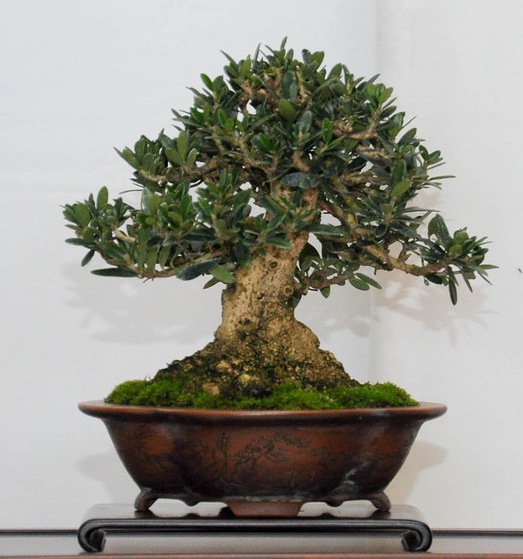
This dwarf bonsai is a good choice for those who want a large indoor bonsai but have limited space available.
The height of this bonsai is about one foot, so it can be placed on a bookshelf or even a dresser top.
A sunny spot is best for this fruit tree if you plan to grow it indoors, but the leaves will provide some shade during the hottest months.
4. Citrus bonsai fruit tree

This dwarf bonsai is a great choice for those who want to grow fruit indoors. The fruit will ripen between winter and spring depending on the variety you choose.
The small leaves create dense cover that shades the developing fruits, and this keeps them from sunburn.
This indoor bonsai grows best in full sunlight and should be kept at room temperature.
5. Pear bonsai fruit trees
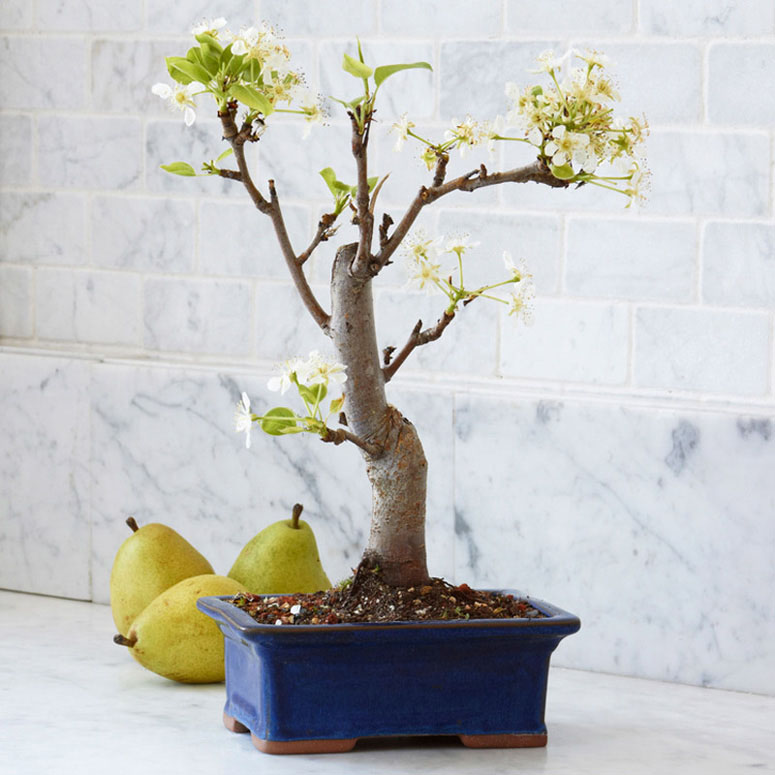
These indoor bonsais are great because they produce delicious and juicy fruits that ripen around May or June.
They are easy to grow indoors provided you give them enough light, but a pear fruit tree can be grown outdoors too.
The small leaves and white flowers appear on the previous year’s growth, so you may need to wait a season or two before you see fruit from your bonsai pear tree.
6. Apple bonsai fruit trees
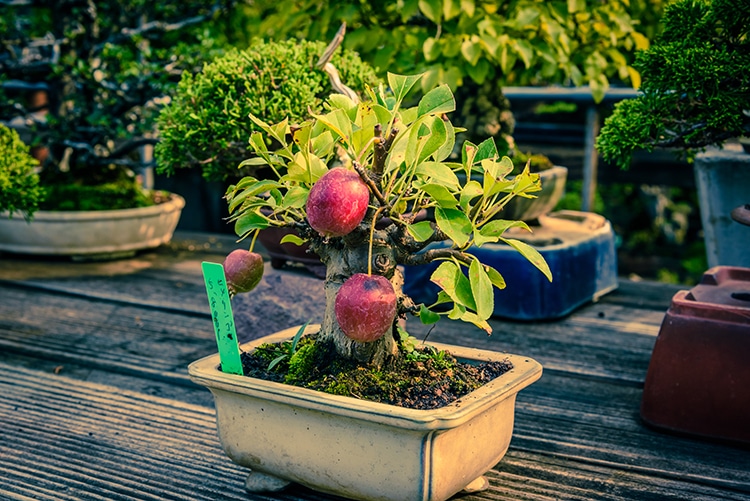
This dwarf indoor bonsai is a good choice if you have children because the fruits can be enjoyed on the tree. The small leaves and flowers appear in spring as the plant prepares to produce fruit.
The tiny white flowers grow into red or green fruits that ripen in mid fall. The fruits will not develop properly if you keep your bonsai apple tree indoors too long.
7. Apricot bonsai fruit trees

This sweet and tasty tree can be kept indoors if you have enough sunlight. The tiny leaves grow quickly, and they create dense cover that shades the fruits developing on previous year’s growth.
The small white flowers appear early in spring before the leaves unfurl.
8. Mango bonsai fruit trees
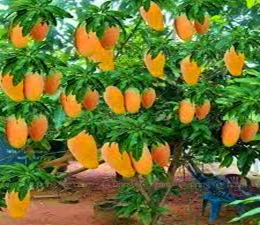
This is a perfect tree for growing indoors during the winter. The small leaves and flowers develop when the temperatures start to warm in spring. The fruits ripen between fall and early winter.
9. Cherry bonsai fruit trees

The small leaves of this indoor bonsai are pale green on top with white undersides. The tiny white flowers appear in spring, and they are followed by delicious fruits that ripen during summer.
10. Plum bonsai fruit trees
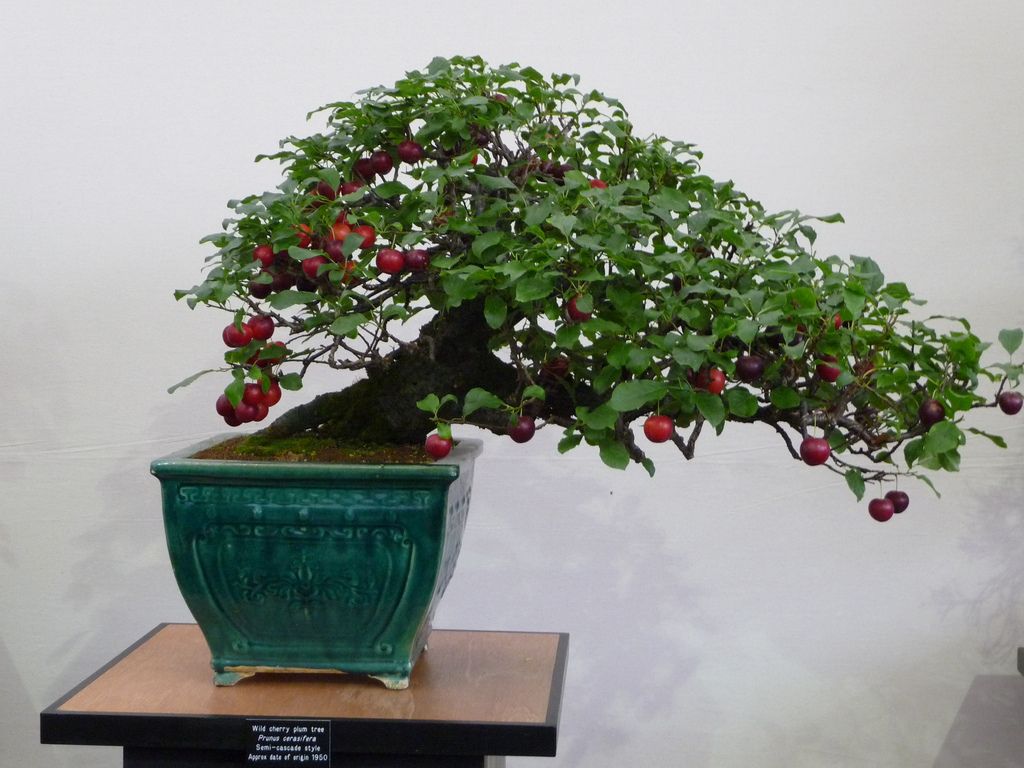
This aromatic dwarf bonsai is very easy to care for indoors because it grows quickly and the branches stay thin even after the plant begins fruiting.
This indoor tree produces sweet plums that can be enjoyed on the plant or you can use them for juice, jam, and even wine.
Caring for your bonsai fruit trees
Your bonsai fruit tree will need to be repotted every three to four years. If you grow it outdoors in the summer, you can just pull up the plant and replant it when the seasons change.
Otherwise, you will need to move your indoor bonsai into an area where there is direct sunlight before removing and re-potting it.
Watering your bonsai fruit trees
You should water your bonsai fruit tree weekly in the summer and less frequently during the winter, but do not leave it sitting in water.
Over-watering can cause root rot, which is fatal to a bonsai plant. Be sure to drain and replace the potting soil every year so that the roots stay healthy.
Fertilizing your bonsai fruit trees
These indoor bonsai will need to be fed regularly if they are in full sun, but you should fertilize less frequently if the light is limited.
Your bonsai fruit tree will also need a fertilizer with trace minerals and low nitrogen content every two weeks all year round.
Location of your bonsai fruit trees
Keep your bonsai fruit tree indoors for at least eight hours a day. If you live in tropical areas, your bonsai fruit tree will stay small and grow more quickly if it is kept at around 70 degrees all year round.
Bonsai fruit trees for sale
The best place to buy bonsai fruit trees is where you know the supplier and they are easy to obtain.
Conclusion
In this blog post we looked at
1. What are bonsai fruit trees and what do they have to offer
2. How to take care of your bonsai fruit tree
3. Why should you buy a bonsai fruit tree
4. Where can you buy a bonsai fruit tree
5. The benefits of having a bonsai fruit tree in your home or garden
6. Tips for taking care of your new bonsai fruit tree
Hopefully you found this article helpful.
In summary bonsai fruit trees are a great addition to your collection. These colourful trees brighten a room and provide delicious fruit for you to eat.
If you haven’t already done so make sure you grab out free BONSA programme here.
